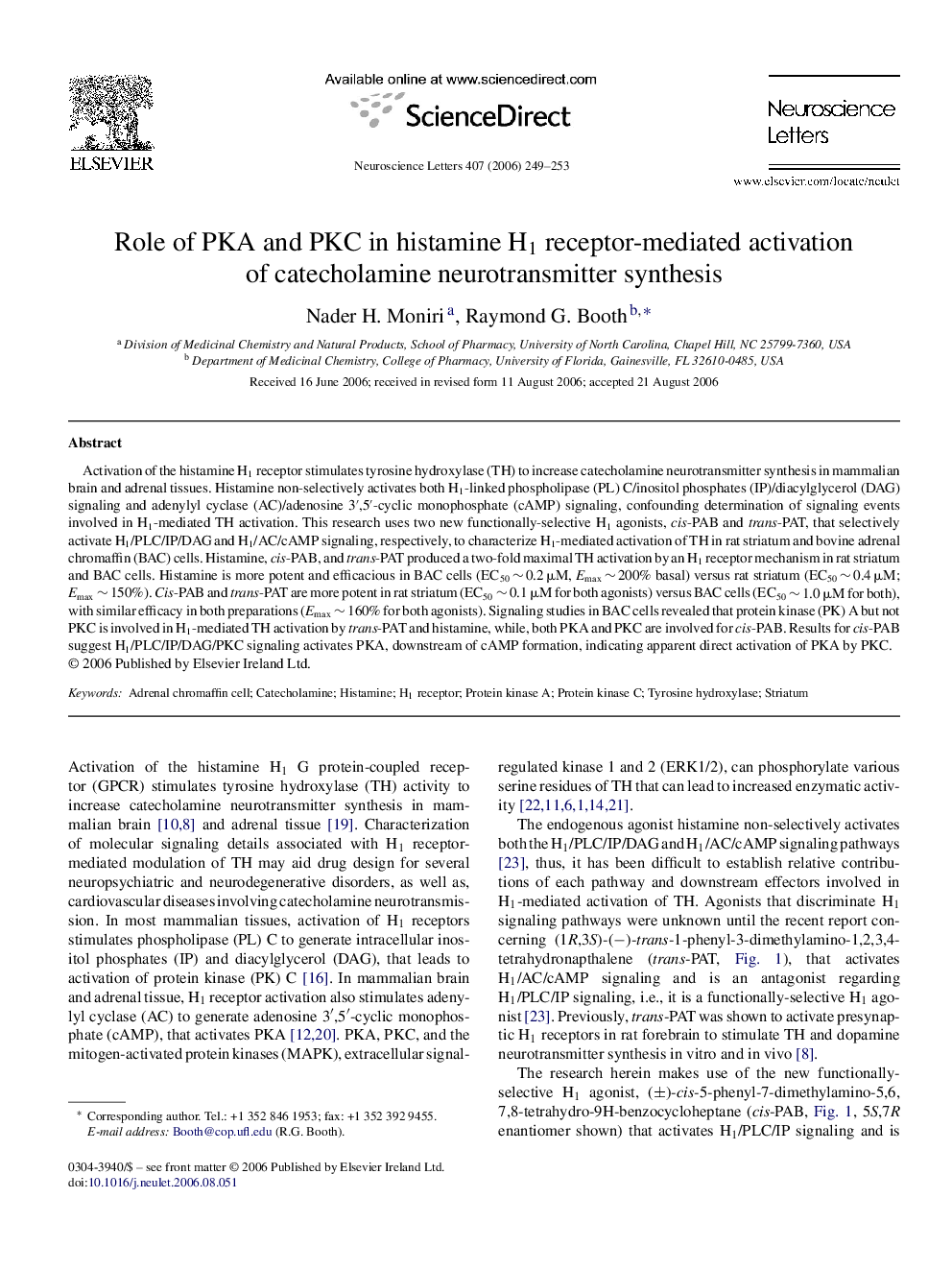| Article ID | Journal | Published Year | Pages | File Type |
|---|---|---|---|---|
| 4350256 | Neuroscience Letters | 2006 | 5 Pages |
Activation of the histamine H1 receptor stimulates tyrosine hydroxylase (TH) to increase catecholamine neurotransmitter synthesis in mammalian brain and adrenal tissues. Histamine non-selectively activates both H1-linked phospholipase (PL) C/inositol phosphates (IP)/diacylglycerol (DAG) signaling and adenylyl cyclase (AC)/adenosine 3′,5′-cyclic monophosphate (cAMP) signaling, confounding determination of signaling events involved in H1-mediated TH activation. This research uses two new functionally-selective H1 agonists, cis-PAB and trans-PAT, that selectively activate H1/PLC/IP/DAG and H1/AC/cAMP signaling, respectively, to characterize H1-mediated activation of TH in rat striatum and bovine adrenal chromaffin (BAC) cells. Histamine, cis-PAB, and trans-PAT produced a two-fold maximal TH activation by an H1 receptor mechanism in rat striatum and BAC cells. Histamine is more potent and efficacious in BAC cells (EC50 ∼ 0.2 μM, Emax ∼ 200% basal) versus rat striatum (EC50 ∼ 0.4 μM; Emax ∼ 150%). Cis-PAB and trans-PAT are more potent in rat striatum (EC50 ∼ 0.1 μM for both agonists) versus BAC cells (EC50 ∼ 1.0 μM for both), with similar efficacy in both preparations (Emax ∼ 160% for both agonists). Signaling studies in BAC cells revealed that protein kinase (PK) A but not PKC is involved in H1-mediated TH activation by trans-PAT and histamine, while, both PKA and PKC are involved for cis-PAB. Results for cis-PAB suggest H1/PLC/IP/DAG/PKC signaling activates PKA, downstream of cAMP formation, indicating apparent direct activation of PKA by PKC.
